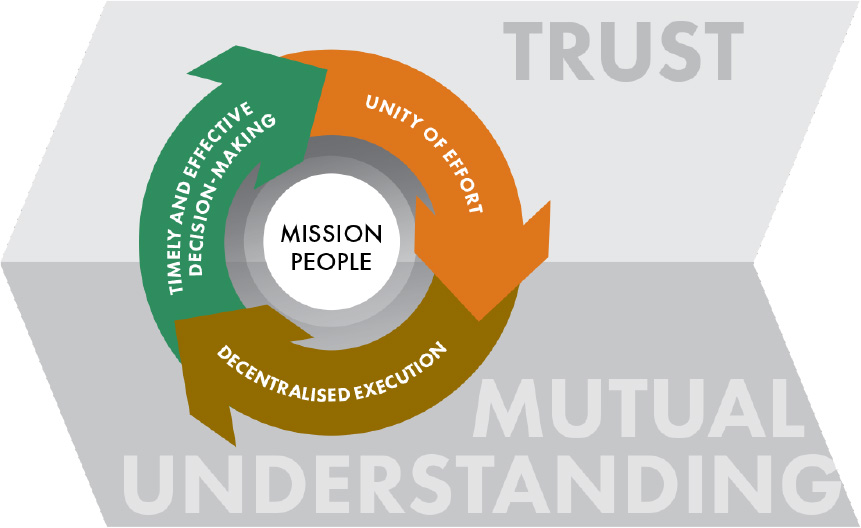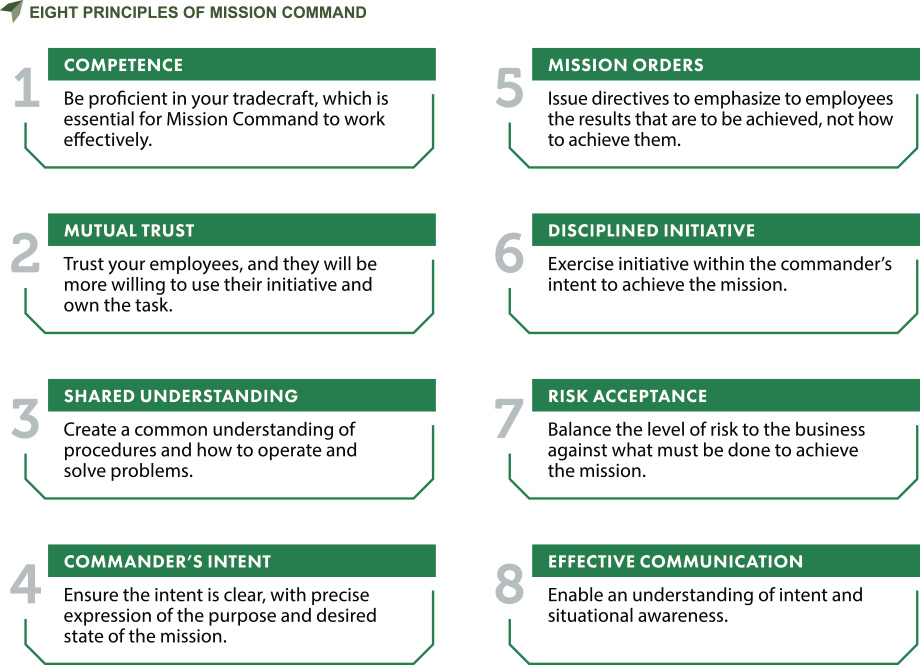The challenge of uncertainty which both LTC Enriquez and LTC “W” faced is something many commanders in the SAF can relate to. They know too well the perpetual tension between issuing precise instructions and the alternative of empowering lower echelons of command to make decisions appropriate to the situation at hand. The latter approach is known as Mission Command. Commanding by instruction, in which clear and to-the-letter instructions are given, leaves little room for subordinate initiative and may be criticised as micro-managing. While commanding by intent may seem a more enlightened approach, the commander has to loosen his control, which entails a degree of risk-taking and deep trust among the team members. The question is whether one approach is superior to the other or there should be a balance between the two approaches. There is also the question of whether the context should matter greatly when deciding on the approach to take.
Warfare is a dynamic and unpredictable affair. As the saying goes, no plan survives first contact with the enemy. Some modern approaches to warfare have thus emphasised commanding by intent rather than commanding by instruction, so that forces are agile enough to adapt to changing conditions. But organising for Mission Command may not come naturally in the military. Militaries are by their very nature detail-oriented and precise organisations, optimised for an anticipated task. So, even as militaries may see the usefulness of a more decentralised approach to command, there are cultural and structural impediments that may hamper this shift.
Any effort to shift towards Mission Command can also be complicated by technological advances in communications which enable better Command and Control (C2) of forces, thus allowing commanders at the highest echelons to observe and direct missions at the tactical level. This may lead to the conclusion that there is less need to apply Mission Command, and encourage an organisation's tendency to centralise decisions, information, and resources in the name of maximising efficiencies and minimising risks. As the SAF pursues new technologies and builds the next generation of networks and sensors, it is useful to reflect on the balance between centralisation and decentralisation. Do more powerful information resources mean that the centre is the best place for decision-making? Or could decentralised access to the same information enable not only more agile but also better decisions on the ground?

The essence of Mission Command.
Source: Sparks Consulting LLC
As a command approach that focuses on subordinate empowerment to make decentralised decisions, Mission Command is premised on the view that there can be no perfect plan. Especially in situations fraught with uncertainty, what is critical to success is agility and responsiveness. With centralised authority, there may be delay and the risk of misinterpreting the ground situation. The Mission Command approach emphasises trust in subordinate echelons' assessment and initiative. What is key is a clear articulation of the commander's intent to ensure alignment across the unit.

Source: Mission Command: Applying a military leadership philosophy to high-performance teams (Peter David, Kearny, 2021).
These eight principles of Mission Command which Peter David of business consultancy Kearney drew up to guide business teams originated from the military. What stands out is that effective Mission Command in any organisation requires more than just C2 doctrines and systems. It is difficult to imagine an organisation applying Mission Command effectively unless there is a significant cultural and mindset shift that has permeated through the organisation.